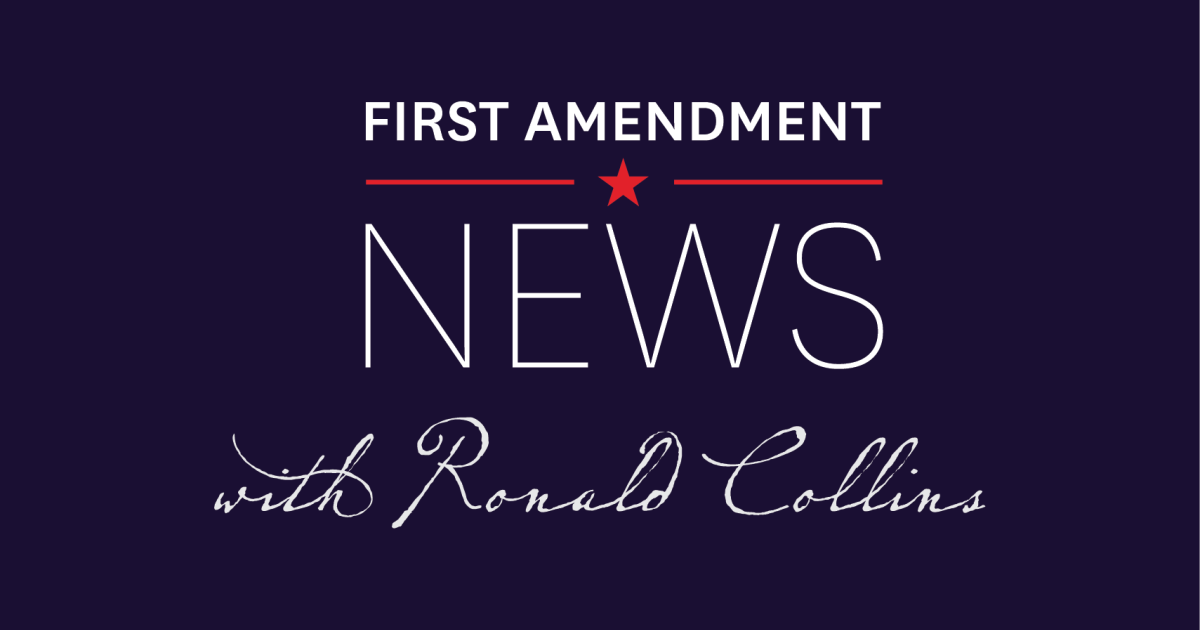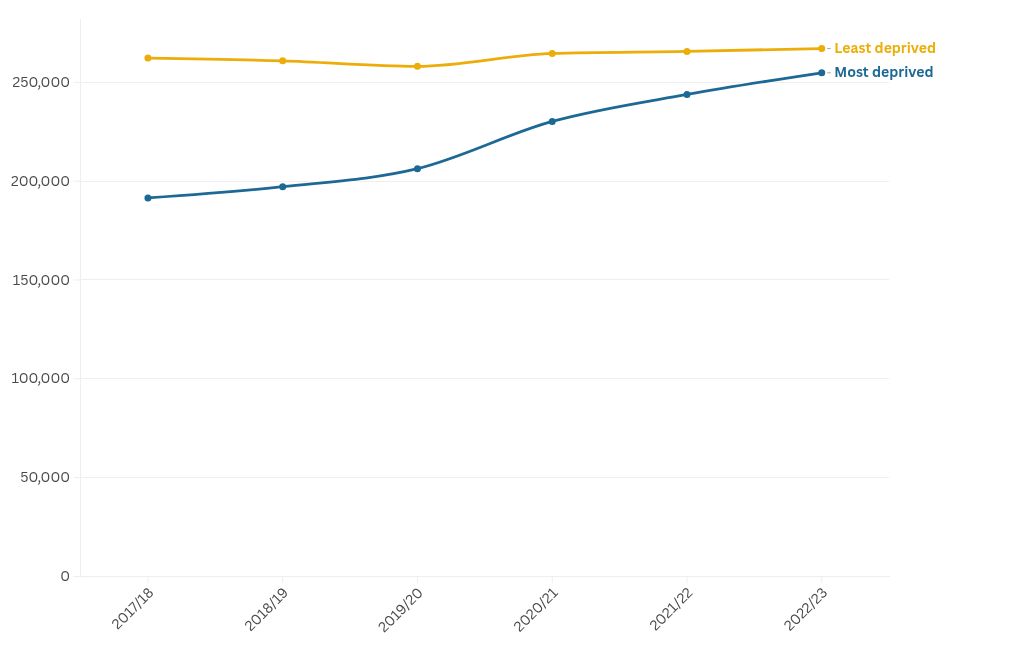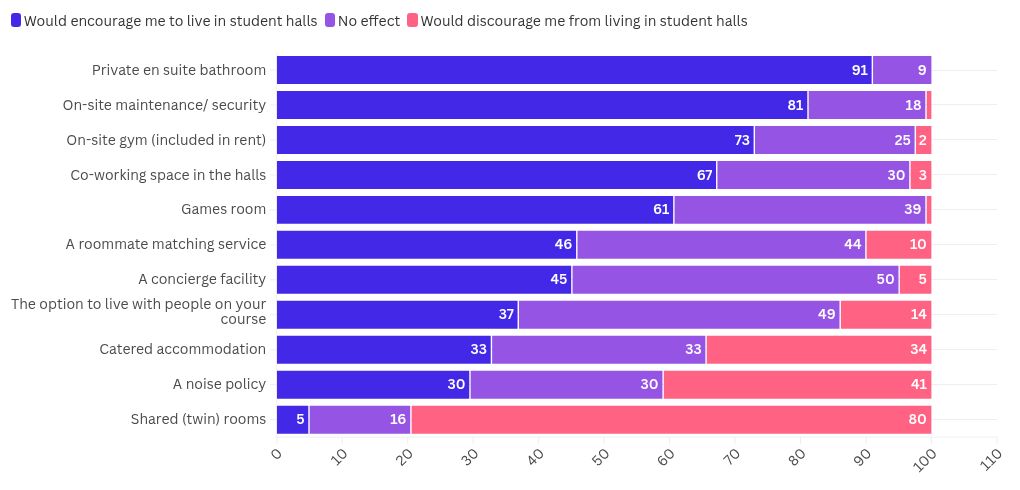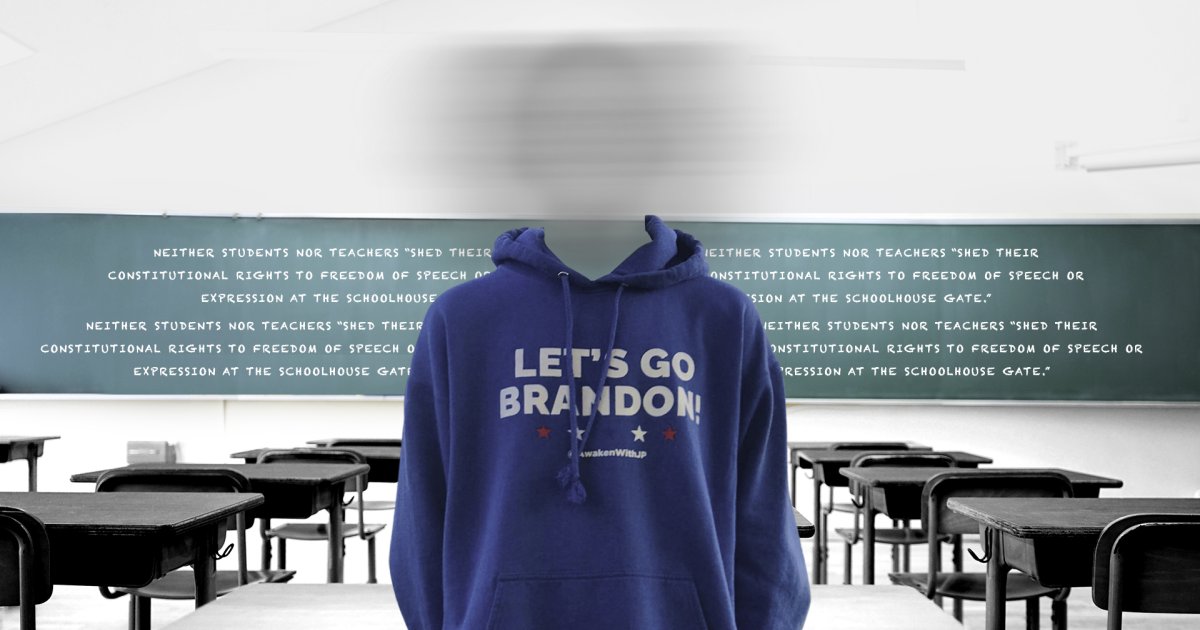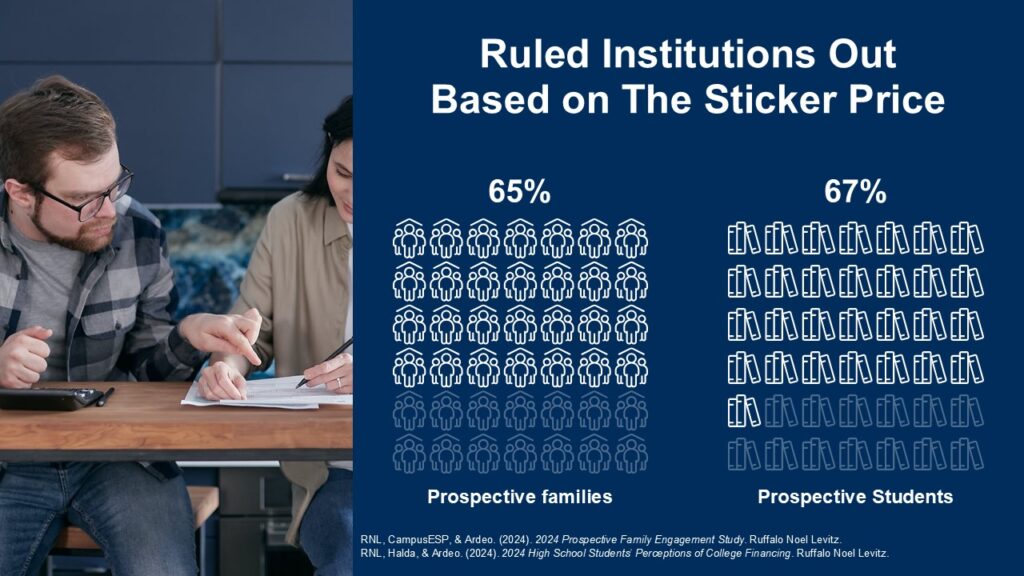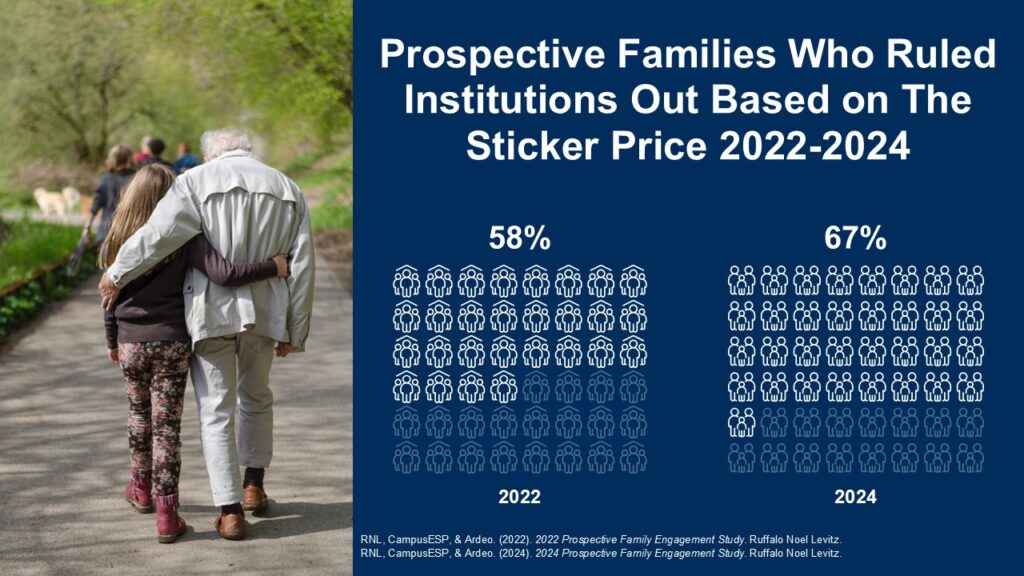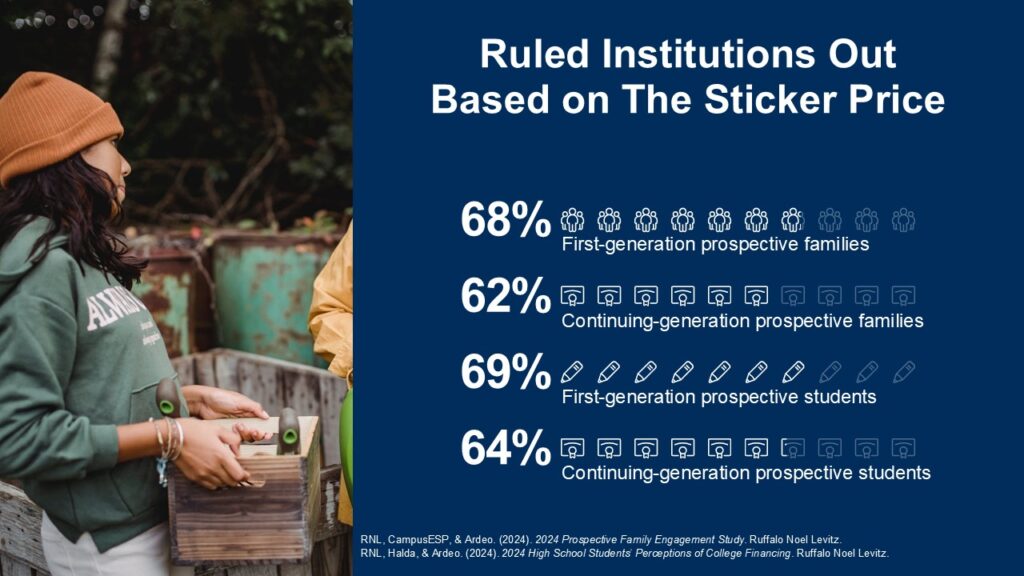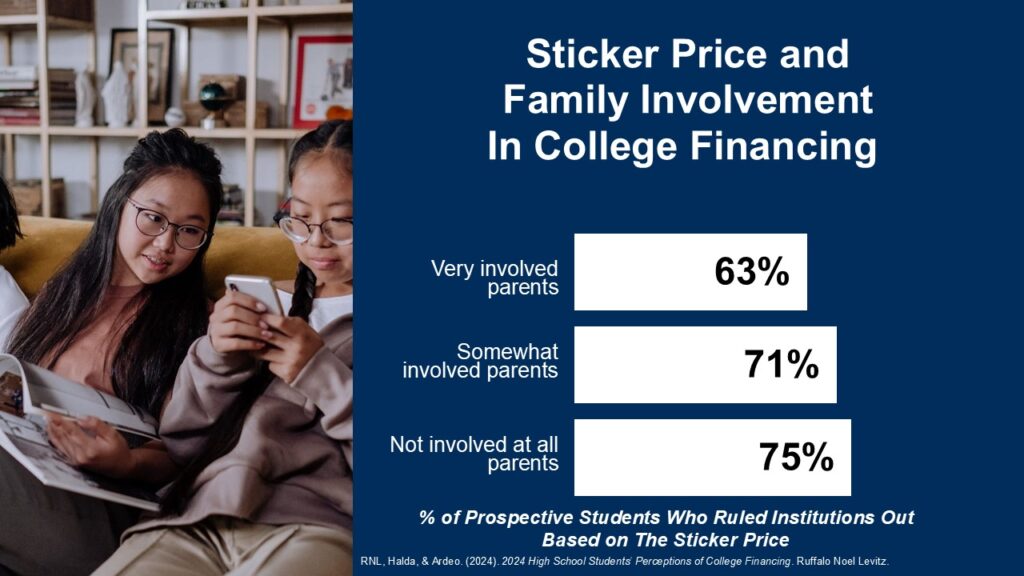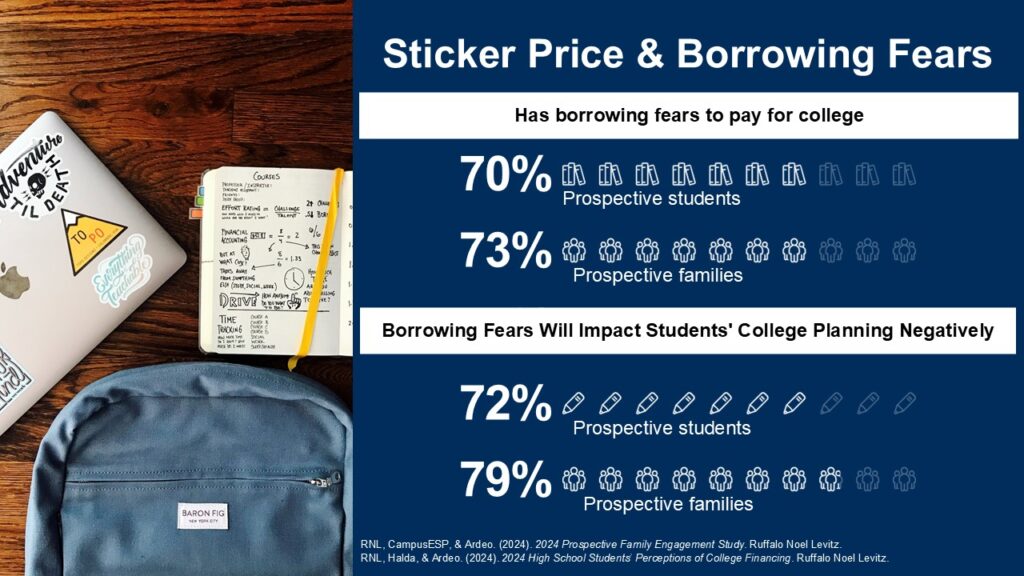“[There is a] deeply troubling notion that anyone who dares to report unfavorable facts about a presidential candidate is engaged in ‘sabotage’ (as opposed to, say, contributing to the free exchange of information and ideas that makes our democracy possible).” – David McCraw (New York Times lawyer)
While some liberals are busy pissing in the free speech pot with their PC campus cancel culture campaigns, some conservatives do likewise with their compliant support of Trump’s anti-free speech crusade.
Mind you, this is not any equivalence dodge but rather further proof of Nat Hentoff’s damnatory maxim, “free speech for me — but not for thee.”
I continue to be amazed by the fact that so many so-called free speech supporters in the conservative and even libertarian camps are cowardly silent when Trump and his sycophantic serfs (e.g., his Attorney General candidate) make it abundantly clear that they intend to wage censorial war on their political opponents.
ABC’s $15 million+ settlement
Before I say more about anti-free speech Trumpsters, let me say a few words about ABC’s $15 million settlement (replete with an apology and another $1 million for attorneys’ fees) in the Trump defamation case involving George Stephanopoulos. ABC News agreed to pay that amount toward Donald Trump’s presidential library.
Warranted or not, ABC’s settlement has drawn criticism. For example:
- Joyce Vance: “I’m old enough to remember — and to have worked on — cases where newspapers vigorously defended themselves against defamation cases instead of folding before the defendant was even deposed. . . . That, by the way, includes defamation cases brought by candidates for the presidency.”
- Stephen Rohde: “I think the reasoning behind Judge Altonaga’s denial of ABC’s Motion to Dismiss was flawed and ABC should have sought appellate review before paying Trump’s non-existent ‘Presidential Library’ $15 million and his lawyers another $1 million. I think on the witness stand Stephanopoulos would have impressed the jury that he genuinely believed the defamation verdict meant that Trump had raped Carroll. Even before it got to the jury, ABC would have had a good motion for a nonsuit under NYT v Sullivan that Trump failed to prove Stephanopoulos subjectively possessed ‘knowledge of falsity’ or acted in ‘reckless disregard of the truth.’ And ABC’s lawyers would have a field day cross-examining Trump on his entire sordid past in order to show that his reputation as a sexual abuser, liar, and convicted felon was hardly damaged by this one broadcast.”
Five possible reasons for ABC’s settlement
Though ABC was represented by Nathan Siegel and Elizabeth McNamara (Davis Wright Tremaine), it is well to remember that while settlement agreements can be those urged by counsel, they are ultimately decided by the client even if their counsel urges otherwise. In other words, in the Trump case, counsel and client may have agreed on settling or disagreed, and the client’s wishes prevailed. However that might be, the following reasons might explain why ABC opted to settle:
- Fear of what discovery might reveal: Here, the concern would have to do with the possibility of making public damning e-mails or other communications that showed an animus towards Trump and/or a certain recklessness in how ABC conducted itself.
- Desire to shield Stephanopolous from deposition and/or cross-examination at trial: The concern here may have been that Stephanopolous might be dangerously vulnerable during discovery or at trial when pressed by Trump’s lawyer (Alejandro Brito).
- Fear of a potential hostile Florida jury: Trying a case before a South Florida jury could be dangerous given the possibility of sympathy towards Trump and/or the possibility of Dominion-sized damages (unlikely though still possible).
- Best time to settle: After U.S. Magistrate Judge Lisette M. Reid ordered Trump to be deposed, ABC might have figured that this was the best time to cut a deal with the plaintiff and cut its losses.
- Desire to placate Trump moving forward: Here, fear of retribution going forward might have also played a role in ABC’s decision to settle.
Going forward: Media on the run
While not compliant in duplicitous ways, some in the media world are nonetheless guarded in how to proceed in Trump times.
For example, “The news media is heading into this next administration with its eyes open,” said Bruce Brown, executive director of the Reporters Committee for the Freedom of the Press. “Some challenges to the free press may be overt, some may be more subtle,” Brown said. “We’ll need to be prepared for rapid response as well as long campaigns to protect our rights — and to remember that our most important audiences are the courts and the public.”
That said, consider the following:
- Libel Lawsuits on the rise: “During the presidential campaign, Trump sued CBS News [for $10 million] for the way it edited an interview with opponent Kamala Harris. At his news conference, Trump said he was expecting to file a lawsuit against the Des Moines Register in Iowa for publishing results of a poll shortly before the election that suddenly had him behind Harris. He said that amounted to ‘fraud and election interference.’”
UPDATE: Graham Kates, “Trump sues Des Moines Register over poll, promises more lawsuits against news outlets after ABC News settlement,” CBS News (Dec. 17)
- Licensing Threats: “Over the past several weeks, lawyers for Mr. Trump and two of his most high-profile nominees — Pete Hegseth, the potential defense secretary, and Kash Patel, whom Mr. Trump has picked to run the F.B.I. — warned journalists and others of defamation lawsuits for what they had said or written.”
See also: Jon Brodkin, “Trump FCC chair wants to revoke broadcast licenses—the 1st Amendment might stop him,” Ars Technica, (Dec. 17):
“Look, the law is very clear,” Brendan Carr [Trump’s pick for the FCC] told CNBC on Dec. 6. “The Communications Act says you have to operate in the public interest. And if you don’t, yes, one of the consequences is potentially losing your license. And of course, that’s on the table. I mean, look, broadcast licenses are not sacred cows.” Carr has said his FCC will take a close look at a complaint regarding a CBS 60 Minutes interview with Kamala Harris before the election. Trump criticized the editing of the interview and said that “CBS should lose its license.”
[ . . . ]
The Carr FCC and Trump administration “can hassle the living daylights out of broadcasters or other media outlets in annoying ways,” said Andrew Jay Schwartzman, who is senior counselor for the Benton Institute for Broadband & Society.
- Seizing Journalists’ Records: “News organizations are worried that a Justice Department policy that has generally prohibited prosecutors from seizing the records of journalists in order to investigate leaks will be reversed, and are already urging journalists to protect their work. ‘If you have something you don’t want to share with a broader audience, don’t put it on the cloud,’ ProPublica’s [Jesse] Engelberg said.”
- Ending Support for Public Radio and TV: “Sen. John Kennedy of Louisiana recently introduced a bill that would end taxpayer funding for public radio and television, a longtime goal of many Republicans that may get momentum with the party back in power.”
- Testing the Boundaries of Current Defamation Law: “‘There’s been a pattern and practice for the past couple of years of using defamation litigation as a tactic to harass or test the boundary of case law,’ said Ms. [Elizabeth] McNamara, who represented ABC News and Mr. Stephanopoulos but was speaking in general.”
See also: Angel Eduardo, “Why New York Times v. Sullivan matters more than ever,” FIRE (March 7, 2023):
There have been numerous bids for the Supreme Court to overrule the Sullivan decision, and Justices Clarence Thomas and Neil Gorsuch have both expressed a willingness to revisit it. Politicians from former President Donald Trump to Florida Governor Ron DeSantis have publicly attacked the Sullivan decision and its underlying arguments, and Florida state legislator Alex Andrade filed a bill in February 2023 designed to effectively overturn it.
- Currying favor with Trump: A recent New York Times headline says much: “In Display of Fealty, Tech Industry Curries Favor with Trump.” That seems to be the trend:
The $1 million donations came gradually — and then all at once.
Meta. Amazon. OpenAI’s Sam Altman. Each of these Silicon Valley companies or their leaders promised to support President-elect Donald J. Trump’s inaugural committee with seven-figure checks over the past week, often accompanied by a pilgrimage to Mar-a-Lago to bend the knee.
The procession of tech leaders who traveled to hobnob with Mr. Trump face-to-face included Sundar Pichai, Google’s chief executive, and Sergey Brin, a Google founder, who together dined with Mr. Trump on Thursday. Tim Cook, Apple’s chief executive, shared a meal with Mr. Trump on Friday. And Jeff Bezos, the founder of Amazon, planned to meet with Mr. Trump in the next few days.
[ . . . ]
With their donations, visits and comments, they joined a party that has already raged for a month, as a cohort of influential Silicon Valley billionaires, led by Elon Musk, began running parts of Mr. Trump’s transition after endorsing him in the campaign.
See also: “List of Tech Companies That Donated to Trump’s Inaugural Fund,” Newsweek (Dec. 13)
Related
TikTok takes its case to Supreme Court
A group of TikTok users filed a separate application on Monday afternoon, also asking the court to block enforcement of the law.
Social media giant TikTok and its parent company, ByteDance, on Monday asked the justices to block a federal law that would require TikTok to shut down in the United States unless ByteDance can sell off the U.S. company by Jan. 19. Unless the justices intervene, the companies argued in a 41-page filing, the law will “shutter one of America’s most popular speech platforms the day before a presidential inauguration.”
The request came three days after a federal appeals court in Washington turned down a request to put the law on hold to give TikTok time to seek review in the Supreme Court. A panel made up of judges appointed by Presidents Barack Obama, Donald Trump, and Ronald Reagan explained that the companies were effectively seeking to delay “the date selected by Congress to put its chosen policies into effect” — particularly when Congress and the president had made the “deliberate choice” to “set a firm 270-day clock,” with the possibility of only one 90-day extension.
Congress enacted the law, the Protecting Americans from Foreign Adversary Controlled Applications Act, earlier this year, and President Joe Biden signed it on April 24. The law identifies China and three other countries as “foreign adversaries” of the United States and bans the use of apps controlled by those countries.
TikTok, which has roughly 170 million users in the United States and more than a billion worldwide, ByteDance, and others filed challenges to the law in the U.S. Court of Appeals for the District of Columbia Circuit.
Related
Oklahoma Settlement protects journalists’ right to cover education officials
Oklahoma City, OK — After officials blocked reporters from attending state government proceedings, Oklahoma’s oldest television station has now secured a major victory for press freedom, reaching a settlement that ensures its reporters will have full access to state education meetings and officials. The win also includes a court-ordered permanent injunction that bars officials from ever repeating the behavior that led to the lawsuit.
The agreement resolves the First Amendment lawsuit filed by the Institute for Free Speech and local counsel Robert “Bob” Nelon of Hall Estill on behalf of three reporters and their employer, the owner of Oklahoma City television station KFOR-TV, against Oklahoma Superintendent of Public Instruction Ryan Walters and Press Secretary Dan Isett. The settlement guarantees KFOR equal access to State Board of Education meetings, press conferences, and other media events.
“This settlement vindicates the fundamental principle that government officials cannot declare themselves the arbiters of ‘truth,’ or pick and choose which news outlets cover their activities based on how favorable the reporting is,” said Institute for Free Speech Senior Attorney Charles “Chip” Miller. “The First Amendment protects the right of journalists to gather and report news, even — or especially — when the coverage scrutinizes government officials and holds them accountable to the public.”
The agreement requires the Oklahoma State Department of Education to restore KFOR’s access to board meetings, press conferences, and media events. It also mandates KFOR’s inclusion in all press distribution lists and advance notifications of department activities. Additionally, the department agreed to re-establish a media line for journalists to attend board meetings.
‘So to Speak’ podcast: Whittington on academic freedom
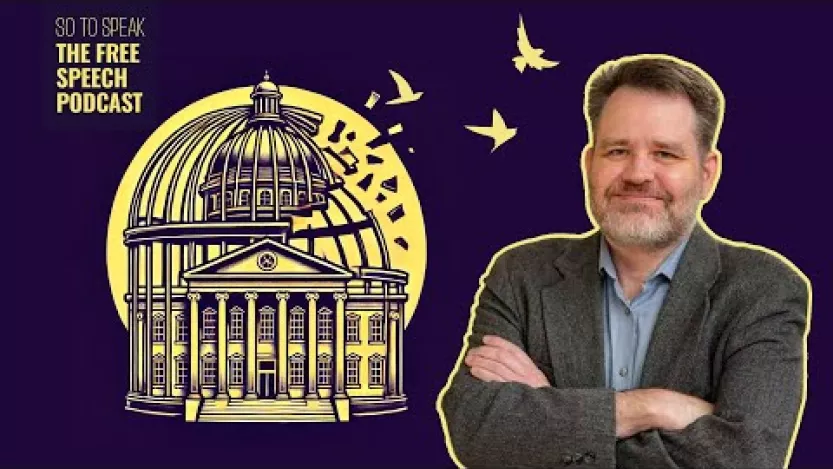
“Who controls what is taught in American universities — professors or politicians?”
Yale Law professor Keith Whittington answers this timely question and more in his new book, “You Can’t Teach That! The Battle over University Classrooms.” He joins the podcast to discuss the history of academic freedom, the difference between intramural and extramural speech, and why there is a “weaponization” of intellectual diversity.
Keith E. Whittington is the David Boies Professor of Law at Yale Law School. Whittington’s teaching and scholarship span American constitutional theory, American political and constitutional history, judicial politics, the presidency, and free speech and the law.
Stephen Solomon on ‘Revolutionary Dissent’
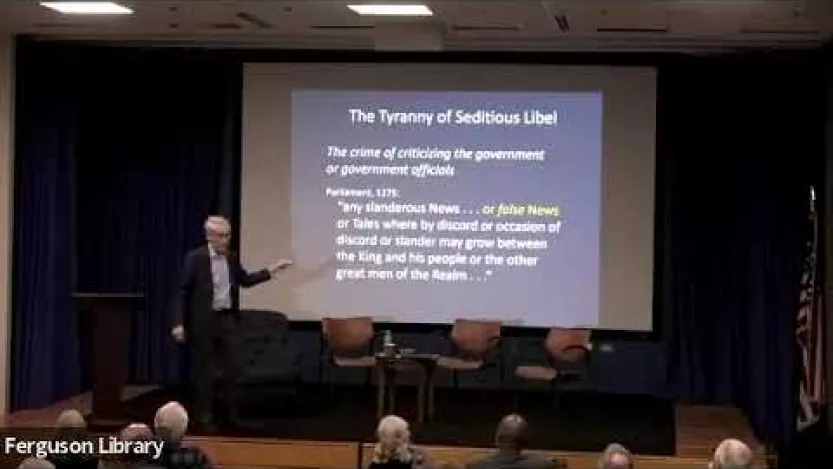
What persuaded our nation’s founders to reject the British laws that made it a crime to criticize government officials and, instead, guarantee freedom of speech and press? NYU Professor and First Amendment Watch editor Stephen Solomon told the story of the protests and controversy that led to the First Amendment in a recent talk at The Ferguson Library in Stamford, CT.
More in the News
- Eugene Volokh, “Missouri Legislative Employee Was Unconstitutionally Fired for Pro-Mask-Policy Letter,” The Volokh Conspiracy (Dec. 17)
- Eugene Volokh, “After Plaintiff “Criticized the City Manager …, the Manager Complained About Him to the Police,” The Volokh Conspiracy (Dec. 17)
- Larry Burris, “Masked Protests and First Amendment Rights – The Chickenman Case in Smyrna,” WGNS Radio (Dec. 16)
- Tammy Grubb, “UNC pro-Palestinian protester wins 1st Amendment case. DA drops charges against others,” The News & Observer (Dec. 16)
- Eugene Volokh, “Rape Allegations in #TheyLied Defamation Lawsuit Aren’t on a Matter of ‘Public Interest,’ Says N.Y. Judge,” The Volokh Conspiracy (Dec. 16)
- Natalie La Roche Pietri, “Broward school board to vote on banning religious signage after ‘Satan’ First Amendment lawsuit,” WLRN (Dec. 16)
- “Susanna Granieri, “Terror-Financing’ Bill Targeting Non-Profits,” First Amendment Watch (Dec. 13)
- “Texas legislators file unconstitutional bills to prohibit use of AI in election campaigns,” FIRE (Dec. 12)
- “BANNED WORDS: Iowa social studies teacher bans students from saying ‘Ohio,’ referencing the Holocaust,” FIRE (Dec. 10)
- David M. Rubin, “Jury tackles First Amendment issue on tour guides,” The Berkley Independent (Dec. 9)
2024-2025 SCOTUS term: Free expression and related cases
Cases decided
- Villarreal v. Alaniz (Petition granted. Judgment vacated and case remanded for further consideration in light of Gonzalez v. Trevino, 602 U. S. ___ (2024) (per curiam))
- Murphy v. Schmitt (“The petition for a writ of certiorari is granted. The judgment is vacated, and the case is remanded to the United States Court of Appeals for the Eighth Circuit for further consideration in light of Gonzalez v. Trevino, 602 U. S. ___ (2024) (per curiam).”)
Review granted
Pending petitions
Petitions denied
Last scheduled FAN
FAN 450: “‘What Is Free Speech? The History of a Dangerous Idea’ — Major new book coming next year”
This article is part of First Amendment News, an editorially independent publication edited by Ronald K.L. Collins and hosted by FIRE as part of our mission to educate the public about First Amendment issues. The opinions expressed are those of the article’s author(s) and may not reflect the opinions of FIRE or Mr. Collins.

